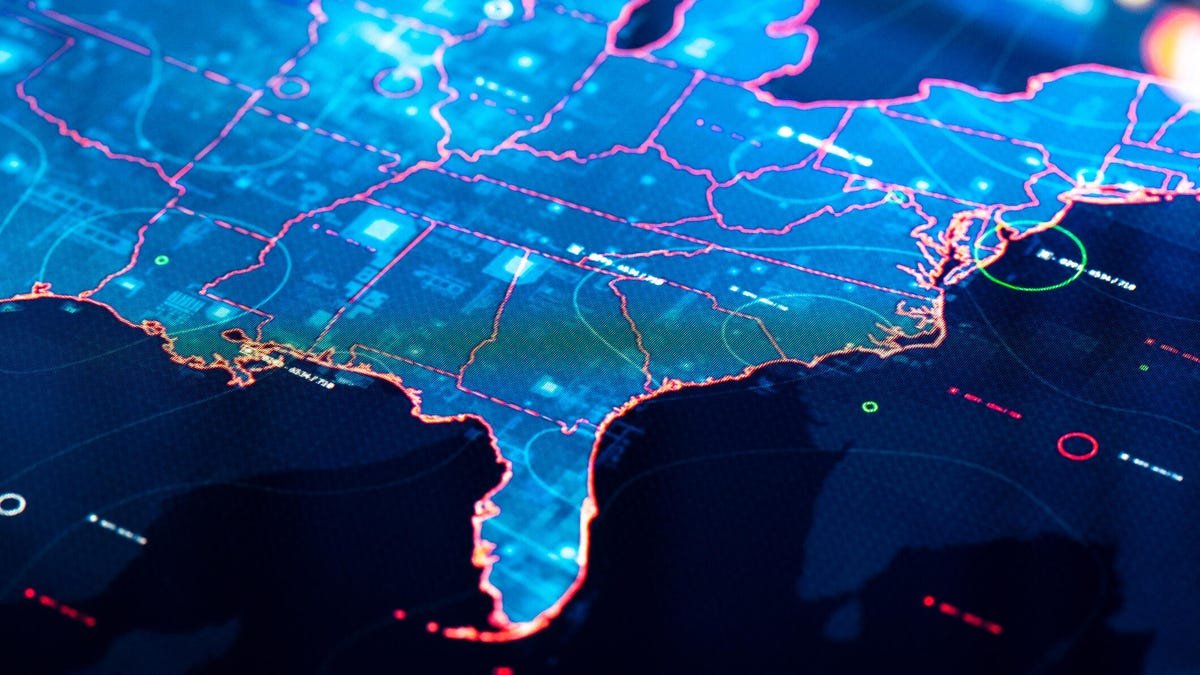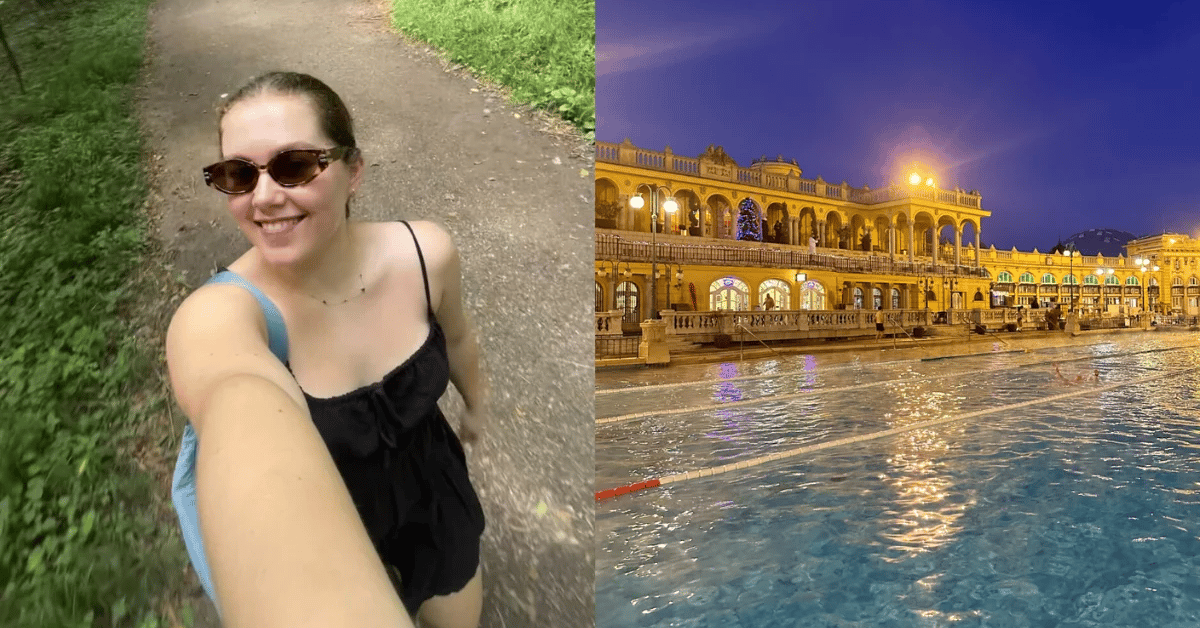Trip Planning
AI Has Made My Trip Planning Easier. What to Know if You’re Headed on a Summer Road Trip

If you’re planning a summer road trip, you’re sure to be one of many on the road. If you’re anything like me, you really like spontaneous, unplanned trips but don’t like organizing things ahead — but it’s definitely a good idea to think about your route now so you can avoid the worst of the traffic and figure out what you can see along the way.
A friend sent me a list of different artificial intelligence tools they used to make trip planning easier. This list included Curiosio, an AI trip planning tool that provides a map, budget and calculated trip length for you within seconds. My ears perked up imagining its potential output speed.
Watch this: I Used Google’s Gemini Gem to Plan My Trip
What is Curiosio AI?
My nonnegotiables for an AI trip planner list include a bright and accessible interface, little to no fees and inspiration for my upcoming trip. Curiosio delivered.
The tool was created by Vas Mylko and Roman Bilusiak to support solo, budget-conscious and multistop travelers seeking personalized road trip experiences that feature cost breakdowns and flexible itineraries.
The free, AI-powered platform offers features like route optimization, detailed itineraries with maps, cost and time breakdowns and detailed guides to destinations.
Between its Geek, Travel and Beta modes, Curiosio compiles quite a few tools to help navigate and embellish your getaway, regardless of what kind of adventure you’re going on.
What I particularly enjoyed about Curiosio was the focus on road trips instead of trying to be an all-in-one travel planner. I also enjoyed its country-specific branding, which includes a hot air balloon adorned with each nation’s flag, and its typeface that is reminiscent of an Indiana Jones PC game. With many sleek, yet sterile, tech brands on the market, I thought this gave the website a sweet touch.
How to use Curiosio for AI road trip planning
Let’s first break down the three modes within Curiosio: Travel, Geek and Beta.
Travel Mode is for travelers or busybodies who want a simplified, real-time guide. Needless to say, I fall into this category. Here, you can follow your itinerary with directions and context-aware tips. This is perfect if you want hands-off-the-wheel support.
There’s also Geek Mode, for the detail-driven, perfectionist folks who want control over every detail of their trip. Direct that friend or partner over to this mode so they can put all that energy in Curiosio, and not on you. Here you can customize routing, add filters and use logic to the best of your planning ability.
And Beta Mode is for the innovative, experimental type who not only thrives off novelty, but loves diving into a new thing before anyone else. Here you can get access to AI enhancements (and bugs) but also try out new features. At the time of writing, Curiosio was developing its membership to focus on the travel experience.
This is how to use Curiosio’s travel tool:
- Head to the website and enter your country.
- Once selected, navigate to the top and select Travel to enter your starting point and desired destination(s) for your road trip. Specify dates, duration and your budget preferences.
- Let the AI do its thing and create a personalized road trip plan. Curiosio promises that this will not take longer than 100 seconds. For reference, my plans were generated in about 35 seconds.
- Review the suggested routes. My output generated four itineraries, ranging in budget and trip length. You can toggle to see the full itinerary breakdown, including a day-by-day itinerary, hotels and budget allocation.
- Modify by adding or removing the destination to start over, or adjust the travel dates or budget to better fit your needs.
- Once you’re satisfied, finalize your itinerary. This is where you can export the plan to your preferred format or integrate with other mapping tools. Head to the upper right corner of your trip itinerary and select Google Maps from the dropdown menu, or copy the link over to your preferred GPS system.
- Then use Google Maps or your GPS system to monitor real-time traffic, plus check out any interesting spots between your starting point and your trip’s destination. (Though an integrated traffic monitoring system would be a beneficial addition to Curiosio.)
Should you use AI to plan your road trip?
Curiosio planned a trip to Jackson Hole for me.
Curiosio is a simple yet ideal tool for independent travelers who crave flexibility, customization and a touch of adventure — especially those planning multistop road trips.
I see it as a great fit for digital nomads, couples, small groups or anyone taking a chaotic road trip with family who wants a streamlined way to create detailed itineraries without relying on prepackaged tours.
If you’re someone who enjoys the planning process but wants help optimizing routes while also discovering hidden gems, Curiosio can be a time-saving, dopamine-boosting tool. It’s also particularly useful for travelers who are budget-conscious but still want well-rounded travel experiences with context tailored to the places they’re going. I found the tool easy to navigate, and it definitely helped me save time.
Now, Curiosio might not be the best choice for travelers seeking all-inclusive vacations, group tours or very spontaneous getaways. If you prefer to book flights and resorts, or if your travel is centered around staying in one city the entire time, the platform’s road trip-focused approach may feel unnecessary and somewhat rudimentary.
It’s safe to say that if you’re seeking an easy, functional and road trip-focused AI tool to support and speed up your planning process, Curiosio is a simple yet functional option.
Planning in seconds is an ideal compromise. Now, if only it could pack for me, too.
Trip Planning
Royal Caribbean removes one of its most popular ports from cruise itinerary – booked passengers have no say

ROYAL Caribbean bosses are to remove a popular tourist destination from the company’s travel itineraries.
Officials said the decision was made out of caution.
Royal Caribbean bosses are continuing to pause visits to Labadee – a plush, private resort located off Haiti’s northern coastline.
Trips to Labadee have been paused at intervals over the last year.
Last summer, bosses at the cruise company paused trips to Labadee until September 2024.
In April, chiefs announced visits to the Haitian island would be halted.
And, now this pause has been extended to October, according to USA Today.
The move was made out of “an abundance of caution,” a spokesperson told the outlet.
“We have communicated with guests directly on this change.”
Americans are urged not to travel to Haiti.
The State Department has issued a Level 4 travel advisory.
Level 4 travel advisories are issued because of the life-threatening risks posed to travelers.
Syria, Iraq, Russia, Venezuela, Lebanon, and Somalia are other countries under a Level 4 warning.
Officials have warned how Americans who visit Haiti may be at risk of kidnapping.
Kidnappers on the island are known to target and attack convoys.
Travelers have been warned not to cross the land border between Haiti and the Dominican Republic.
US Department of State Travel Warnings
THE State Department uses a four level system to issue travel advisories.
Here is what each level means.
- Level 1 – Exercise normal precautions – This is the lowest advisory level for safety and security risks. There is some risk in any international travel, and conditions in other countries may differ from those in the United States.
- Level 2 – Exercise increased caution – Be aware of increased risks to safety and security. Specific risks are described in the Travel Advisory.
- Level 3 – Reconsider travel – Reconsider your travel to the destination due to serious risks to safety and security. Specific risks are described in the Travel Advisory.
- Level 4 – Do not travel – This is the highest advisory level due to life-threatening risks. Specific risks are described in the Travel Advisory. The U.S. government may have very limited or no ability to help, including during an emergency. We advise that U.S. citizens do not travel to the country, or to leave as soon as it is safe to do so.
Source: US Department of State
And, the families of kidnapping victims have been forced to pay up to hundreds of thousands of dollars to ensure people have been released.
Americans have been told not to travel to the island due to the threats of crime, terrorist activity, unrest, and limited health care resources.
Officials have also warned about the risks of gang violence outside the main airport in Port-au-Prince.
Haiti has been under a state of emergency since March 2024.
Americans considering traveling to Haiti are encouraged to set up a point of contact before leaving for the island.
And, they should create a will before leaving the US.
Travelers should also leave DNA samples with their medical provider just in case they are needed by family members, according to the State Department.
Drivers should always keep their cars locked, be alert, and never travel alone.
Trip Planning
More Aussies are using AI to plan holidays, from scoring deals to assembling itineraries

I’m planning a trip to Iceland, aka one of the most expensive countries in the world.
Can I afford to go? What would a realistic budget look like for a two-week holiday? How can I cut corners to save some cash?
I decide to do the 2025 equivalent of phoning a friend — I ask my buddy ChatGPT.
My initial prompt is too vague and it gives pricing in USD, which isn’t particularly helpful. I refine my criteria, asking for a rough total in AUD for a fortnight in September, departing from Perth (“please”, I add, because manners are still important when talking to a robot).
In the blink of an eye, Chat spits out a breakdown of average costs on everything from flights to accommodation, car rental, food and activities.
There are three tiers for backpacker, mid-range and luxury travel and an option to split components if I have a travelling companion.
It even offers suggestions for making my hard-earned coin stretch further, like buying groceries rather than eating out and opting to self-drive rather than joining a guided tour of the famous Golden Circle.
All in all, Chat reckons I’ll need to save $8500-$9000 to make Iceland happen.
What would have taken me hours of research and a lot of math just to ascertain whether I can even consider the trip in the first place was reduced to mere minutes.
Cutting corners, cyber style
While I want to give myself a pat on the back for being so resourceful — there’s a certain smugness that comes with finding a sneaky shortcut — I am hardly the first to use ChatGPT for travel tips.
In recent research conducted by Compare the Market, nearly a third of those surveyed admitted to using artificial intelligence to plan their holidays.
These Aussie respondents said they outsourced a range of tasks to AI, with the most common being destination recommendations, hunting for deals, seeking activities and finding accommodation.
Others reported they used AI to quickly create itineraries, scour flights or transport and understand currency conversion.
The data also gave insight into how different generations are embracing the technology — or not.
Perhaps unsurprisingly, gen Z and millennials are spearheading the adoption of AI when it comes to concocting their dream vacation, with 52 per cent and 44 per cent respectively utilising the tool to plan a holiday.
Meanwhile, 93 per cent of baby boomers and 76 per cent of gen X respondents said they were resistant to bringing AI into their trip arrangements.
Compare the Market’s Chris Ford says the stats reflect how we engage with the ever-changing tech landscape.
“Our latest data highlights a shift in the way travellers are approaching their planning, with convenience, personalisation and speed driving the adoption of innovative AI tools,” he says.
“It’s likely that travellers are using these tools in addition to chatting with travel agents, conducting desktop research or seeking ideas and inspiration from social media.
“AI is evolving at a rapid rate and as it becomes more accessible and intuitive, it’s not surprising that travellers are relying on new technology to help shape their dream holidays.”
But the insurer warns against taking AI’s word as gospel.
With nothing to validate the credibility of such recommendations, Ford says travellers need to practice due diligence.
“AI can be a great starting point when planning a holiday, but always ensure you’re crossing your ‘t’s and dotting your ‘i’s,” he says.
“Many of these tools and services are still in their infancy stage and may not be 100 per cent accurate, so do your own research to ensure you’re equipped with the right tools and information for your trip.
“The last thing we want to see is anyone getting themselves into a potentially dangerous or unsafe situation based on the recommendations from AI.”
The virtual line in the sand
Ford makes a crucial point here about our relationship with platforms like ChatGPT.
Rather than approaching them as one-stop-shop to curate every element of our holiday, we should instead consider them as a starting point to kick off deeper research.
After all, isn’t that part of the fun with travel — the anticipation in the lead-up, the process of discovering a destination before we have arrived and assembling a bucket list tailored to our specific taste?
By asking a computer to generate an itinerary based on what’s popular, we are depriving ourselves of creativity, spontaneity and adventure.
We must also remember that what the AI bot spits out is dependent on the quality of our prompts.
The more we refine our request, the more likely we will receive helpful answers, but even then things can go wonky.
Take this from my colleague Belle: “I asked ChatGPT to give me a child-friendly restaurant in Ubud. It sent me to a weird health food restaurant with a koi pond where you couldn’t wear shoes. My feral children cleared the room within minutes. Disaster.”
Then there’s the cognitive dissonance that comes with considering the environmental impact of AI versus the fear of being left behind if we don’t get on board with this technology.
Like it or not, it is shaping and re-shaping the future at breakneck speed.
We all have to decide where our (virtual) line in the sand is: what is productive and “mindful” use based on our needs and values.
For me, I’m OK with employing ChatGPT to whip up a quick budget so I can take the holiday to Iceland I’ve always dreamed of.
But when it asks if I want activity recommendations or a detailed itinerary next, I politely decline. I’d rather leave some room for mystery and exploration.
“Thanks”, I farewell my cyber mate in my sign-off (because, manners).
What the team thinks
Our collective of writers just so happens to represent the four age demographics mentioned in the research above. So what’s the hot take?
Stephen Scourfield — baby boomer
Trusting someone – or, in this case, something – to book a holiday (particularly a family holiday!) requires a lot of trust.
If some detail is missed in the booking process (a wrong date, a badly timed connection), it will be you standing there, somewhere, trying to fix it (possibly with the family “on your case”).
Would I trust AI yet?
No – not yet.
Of course, I think we all know that AI is good at doing grunt work and it is up to us to check details. So AI is already useful for the broad-brush, first sweep of mapping out a holiday.
But AI won’t then back itself by booking it all. (That will be the game changer.)
So, at this stage, AI, for me, is still a basic tool of research – not a replacement for an experienced and knowledgeable travel agent.
Leyanne Baillie — gen X
Although my generation is confident when it comes to using tech (even if we’re not digital natives), I think AI programs would be more effort than they’re worth.
I know it could be a time-saver in terms of journey-planning brainstorming and getting a rough guide of options, but I’d still want to tailor my itinerary to cater to my personal taste.
I don’t think I’m ready to hand over the reins completely to artificial intelligence just yet.
Jessie Stoelwinder — millennial
I love a good travel hack, and that’s how I have been approaching my use of AI.
Anything that makes life a little easier and frees me up to investigate the fun stuff — where to eat, hike, shop, people-watch etc. — and I am on board.
I’ve used ChatGPT to quickly aggregate travel data for personal trips to assist with admin, logistics and practicalities, which I will then cross-check and verify to make sure the information works for me.
Recommendations, however? Word of mouth and insider intel from a human being will always win, in my opinion.
Megan French — gen Z
I would be open to the idea of utilising AI when planning my travels but I’d take everything it recommends with a grain of salt while still doing my own thorough research.
I think it’s great for foundational information-based planning early in trip preparations, such as “what holidays are on in India during July and how is best to navigate them?”
But when it comes to booking flights and accommodation, I’d go nowhere near AI … yet.
Trip Planning
Why Budapest is Europe’s most underrated city: travel guide.

My hostel was minutes from the Danube, on the Pest side and just a perfect location. A little bit further from the city but accessible via tram, scooter, or bike and still within walking distance of great restaurants, bars and sights.
Plus, if you, like me, crave some Asian cuisine while wandering the cities of Europe, Budapest has a surprisingly incredible selection of small restaurants to try. My personal favourite was PHỞ 18 Budapest — you can thank me later.
What to do in Budapest.
Budapest is so large, and with so much to do, it’d take a tightly packed itinerary to get it all done in a few days. But here are a few of my non-negotiables.
Firstly, walk around. In my humble opinion, there is no better way to get a feel for a new city than by roaming the streets and taking in the sights on foot. Especially in Budapest, a city that can capture your imagination at every corner. Crossing the Liberty Bridge and seeing both sides of the city unfold before your eyes is an experience not easily forgotten.
On my first morning, I walked up to Buda Castle and explored the grounds and museums before hiring a scooter and making my way back to my accommodation.
Image: Supplied.
-

 Brand Stories2 weeks ago
Brand Stories2 weeks agoBloom Hotels: A Modern Vision of Hospitality Redefining Travel
-

 Brand Stories1 week ago
Brand Stories1 week agoCheQin.ai sets a new standard for hotel booking with its AI capabilities: empowering travellers to bargain, choose the best, and book with clarity.
-

 Destinations & Things To Do2 weeks ago
Destinations & Things To Do2 weeks agoUntouched Destinations: Stunning Hidden Gems You Must Visit
-

 Destinations & Things To Do1 week ago
Destinations & Things To Do1 week agoThis Hidden Beach in India Glows at Night-But Only in One Secret Season
-

 AI in Travel2 weeks ago
AI in Travel2 weeks agoAI Travel Revolution: Must-Have Guide to the Best Experience
-

 Brand Stories1 month ago
Brand Stories1 month agoVoice AI Startup ElevenLabs Plans to Add Hubs Around the World
-

 Brand Stories3 weeks ago
Brand Stories3 weeks agoHow Elon Musk’s rogue Grok chatbot became a cautionary AI tale
-

 Asia Travel Pulse1 month ago
Asia Travel Pulse1 month agoLooking For Adventure In Asia? Here Are 7 Epic Destinations You Need To Experience At Least Once – Zee News
-

 AI in Travel1 month ago
AI in Travel1 month ago‘Will AI take my job?’ A trip to a Beijing fortune-telling bar to see what lies ahead | China
-

 Brand Stories2 weeks ago
Brand Stories2 weeks agoContactless Hospitality: Why Remote Management Technology Is Key to Seamless Guest Experiences
